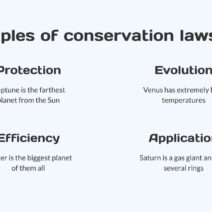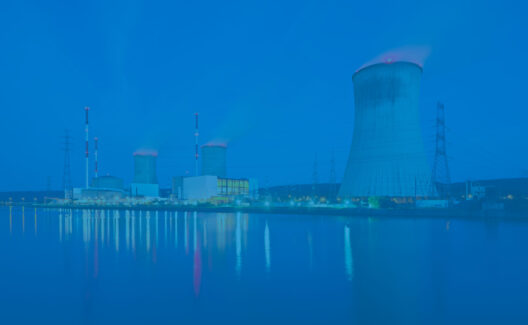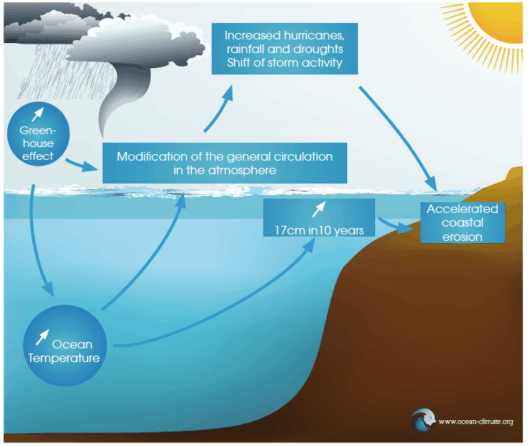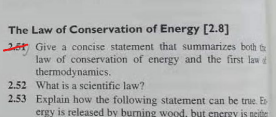Energy, in its myriad forms, reigns as a fundamental principle of our universe; it governs quality, behavior, and interactions among physical entities. However, the phrase “energy is always conserved” can be deceptive, and it begs an inquiry: when is energy not conserved? Exploring the conditions under which energy appears to dissipate or transform rather than remain intact unveils profound insights into the nature of energy itself, and it can shift our understanding of energy dynamics fundamentally.
To understand the nuances, we must delve into the labyrinth of thermodynamics, discuss the role of non-conservative forces, and examine phenomena that disrupt energy conservation. Such exploration not only illuminates scientific principles but also challenges assumptions ingrained in our worldview.
Consider first the underpinnings of energy transformation. The First Law of Thermodynamics, an axiom in physics, states that energy cannot be created or destroyed, only converted from one form to another. Yet there are pivotal moments when it seems that energy dissipates irretrievably into the void. This compels us to ask, what are the circumstances that challenge conservation?
To disassemble this conundrum, we can categorize energy ‘loss’ into three primary domains: non-conservative forces, irreversible processes, and quantum mechanical phenomena. Each domain sheds light on instances where energy transformation seems inefficient, flawed, or altogether lost.
The Intricacies of Non-Conservative Forces
At the outset, we encounter non-conservative forces, which are pivotal in the narrative of energy dissipation. Non-conservative forces, such as friction and air resistance, do not allow for the full recovery of mechanical energy. When an object slides across a surface, kinetic energy gets converted into thermal energy, and this thermal energy dissipates into the surrounding environment. The rubber burns on the road; the friction manifests as heat, lost to the air, transforming energy into a form that is not retrievable by the initial system’s mechanics.
This phenomenon underscores the importance of efficiency in mechanical systems, such as automobiles and industrial machines, where energy losses through non-conservative forces translate to reduced performance. The implications stretch beyond physics; they affect sustainability and environmental efficiency. With energy being so finite, these losses underscore the urgency for innovations that minimize non-conservative interactions, demanding a sharp shift in engineering paradigms.
The Complexity of Irreversible Processes
The narrative continues into the realm of irreversible processes, manifestations of thermodynamic entropy. In any natural process—be it mixing hot and cold water or the expansion of gas—energy disperses and tends toward a state of maximum entropy. This second law of thermodynamics highlights that systems naturally evolve toward configurations with greater disorder, which can translate into a perceived loss of usable energy. Once energy has transformed into a more disorganized form, its capacity to perform work diminishes.
Consider chemical reactions—combustion, for instance. Although it releases energy, it also produces a product (smoke or exhaust) from which new energy can’t be easily reclaimed. Once the chemicals react, the structure of energy bonds changes irrevocably, akin to a house burned to ashes; the original form may be lost, even if energy was conserved in the chemical transformation.
The paradox of life encapsulated within these irreversible processes captures the essence of entropy: a challenge to the perpetuity of energy bonds. This raises philosophical inquiries about growth and decay, life and death, drawing a connection between energy dissipation and the lifecycle of ecosystems. The imperative to reevaluate resource utilization and recycle energy lays bare a critical environmental narrative, especially in a world grappling with climate change and exhaustion of fossil fuels.
Quantum Quandaries and Energy Lost at the Subatomic Level
Beneath the surface of classical physics lies the unpredictable realm of quantum mechanics, a domain that occasionally flirts with the edge of energy conservation. Quantum fluctuations introduce an inherent randomness, fostering instances where particles may seem to ‘borrow’ energy temporarily at the subatomic level. Such behavior can appear contradictory to the conservation of energy, inducing curiosity into the foundational laws underpinning our universe. The implications of quantum energy loss transcend mere physics; they push the boundaries of our understanding of reality itself.
In this quantum theater, particles flicker in and out of existence, blurring the lines between matter and energy. Can we claim conservation when subatomic energy is shapeshifting within a probabilistic framework? The tantalizing possibilities of quantum energy dynamics challenge traditional paradigms and hint at alternatives in energy generation—technologies like quantum batteries and quantum computing, beckoning us to explore the untapped potential within the folds of quantum energy.
Conclusion: Rethinking Our Relationship with Energy
Ultimately, the exploration of energy ‘lost’ rather than conserved invites a reframing of our relationship with energy. It compels us to recognize the inherent complexity within energy transitions, emphasizing the need for efficient mechanisms that mitigate losses while promoting sustainability. In an age where energy resources are dwarfed by consumption demands, understanding the limitations imposed by non-conservative forces, irreversible processes, and quantum mechanics is not merely academic; it’s imperative.
To echo modern environmental concerns, every joule wasted is a step away from sustainable existence. The challenge ahead involves rethinking strategies, innovating technologies, and transforming perceptions centering on energy utilization. Only by diving deep into these intriguing layers of physics and embracing a holistic understanding of energy dynamics can we hope to navigate our way toward a resilient and sustainable future.







